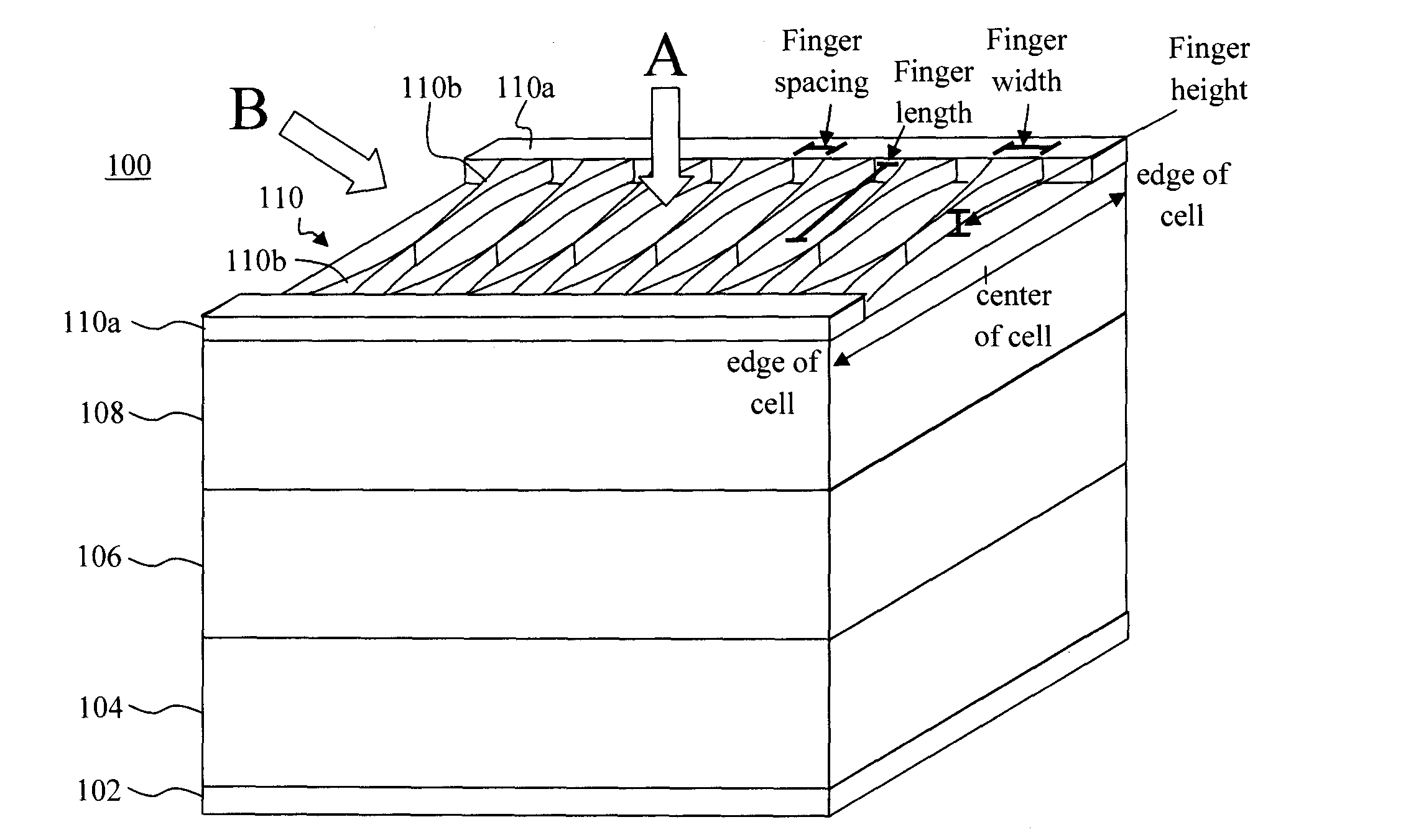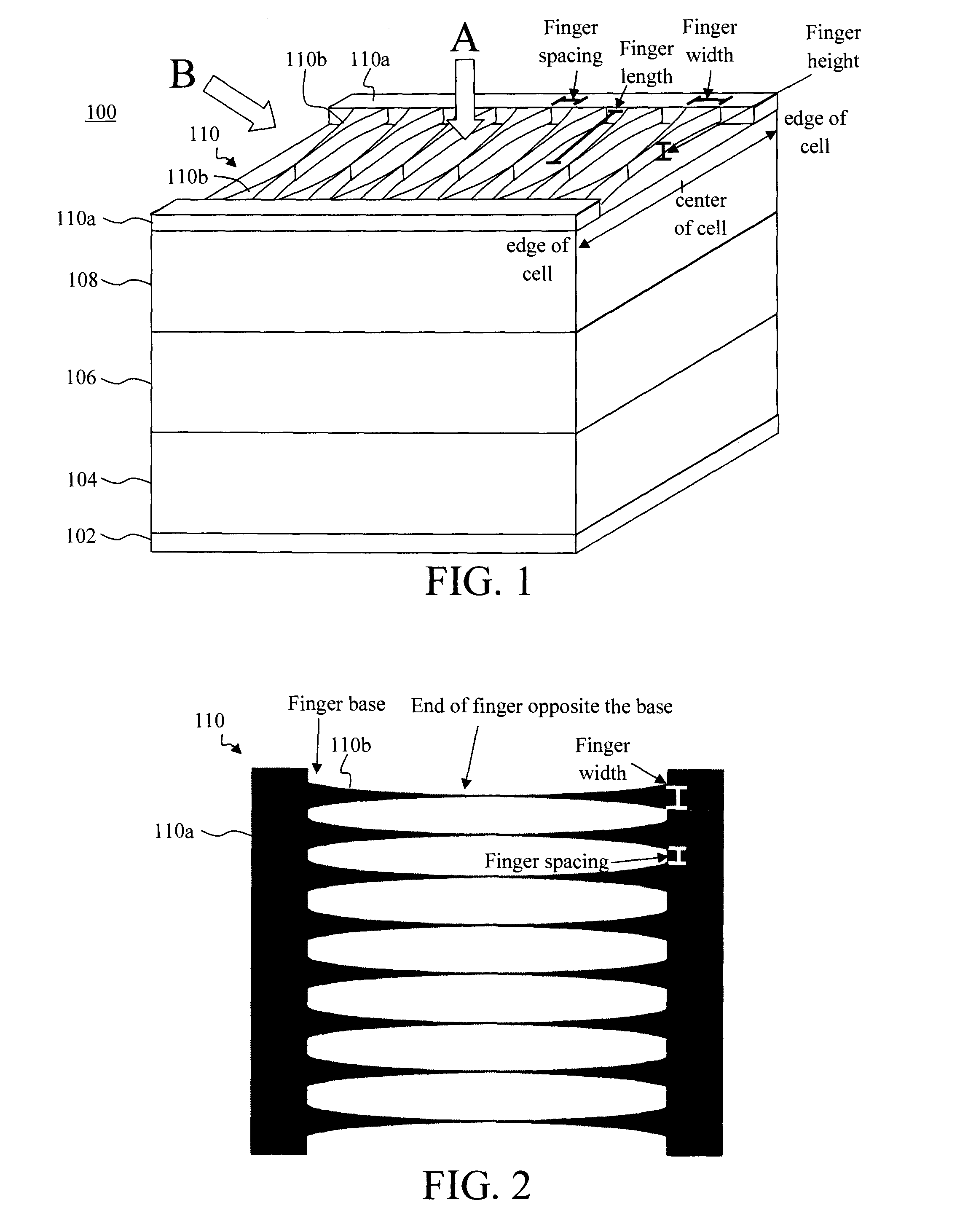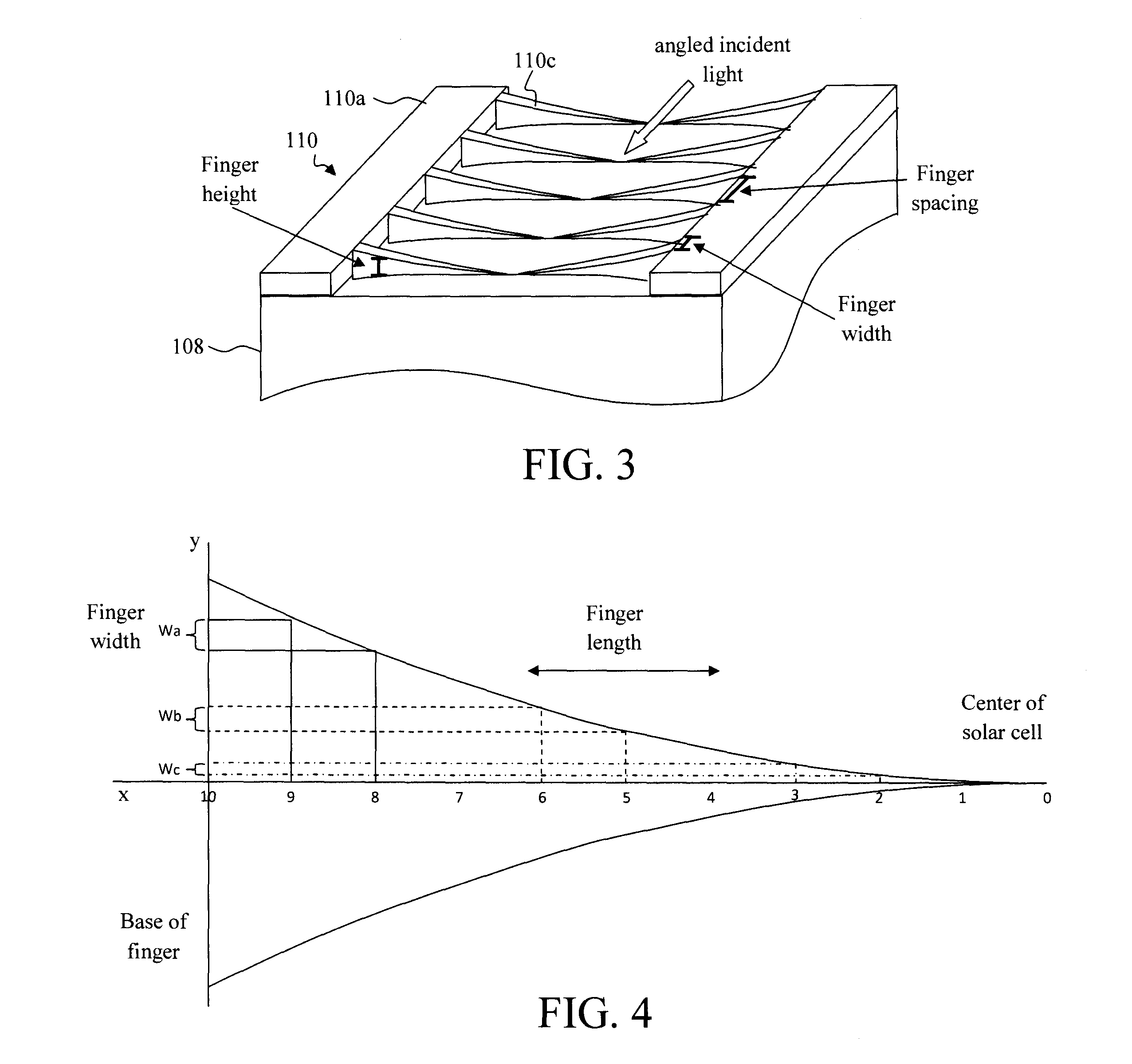Optimized Grid Design for Concentrator Solar Cell
a concentrator and solar cell technology, applied in the field of concentrator solar cells, can solve the problems of low efficiency, high current density, and often at odds with conductivity and transparency requirements, and achieve the effect of increasing power outpu
- Summary
- Abstract
- Description
- Claims
- Application Information
AI Technical Summary
Benefits of technology
Problems solved by technology
Method used
Image
Examples
Embodiment Construction
[0024]Provided herein are concentrator solar cell top contact grid pattern designs which provide increased power output compared to conventional grid patterns for a given cell size, while maximizing transparency. With regard to transparency, as highlighted above the top contact generally consists of a metal grid on top of the light absorbing layers of the device. The metal grid shadows / blocks a portion of the top surface of the device, and thus cuts down the amount of photons received by the semiconductor layers below the grid due to shadowing. The transparency of the device is thus a factor of how much of the top surface is blocked by the metal grid. With regard to transparency, the thinner the grid design the better. However, sufficient electrical conductivity favors a thicker grid design. When the metal grid design is too thin, the losses due to resistance are unacceptably large.
[0025]Advantageously, the present techniques optimize the shape of the metal lines of the grid design ...
PUM
 Login to View More
Login to View More Abstract
Description
Claims
Application Information
 Login to View More
Login to View More - R&D
- Intellectual Property
- Life Sciences
- Materials
- Tech Scout
- Unparalleled Data Quality
- Higher Quality Content
- 60% Fewer Hallucinations
Browse by: Latest US Patents, China's latest patents, Technical Efficacy Thesaurus, Application Domain, Technology Topic, Popular Technical Reports.
© 2025 PatSnap. All rights reserved.Legal|Privacy policy|Modern Slavery Act Transparency Statement|Sitemap|About US| Contact US: help@patsnap.com



